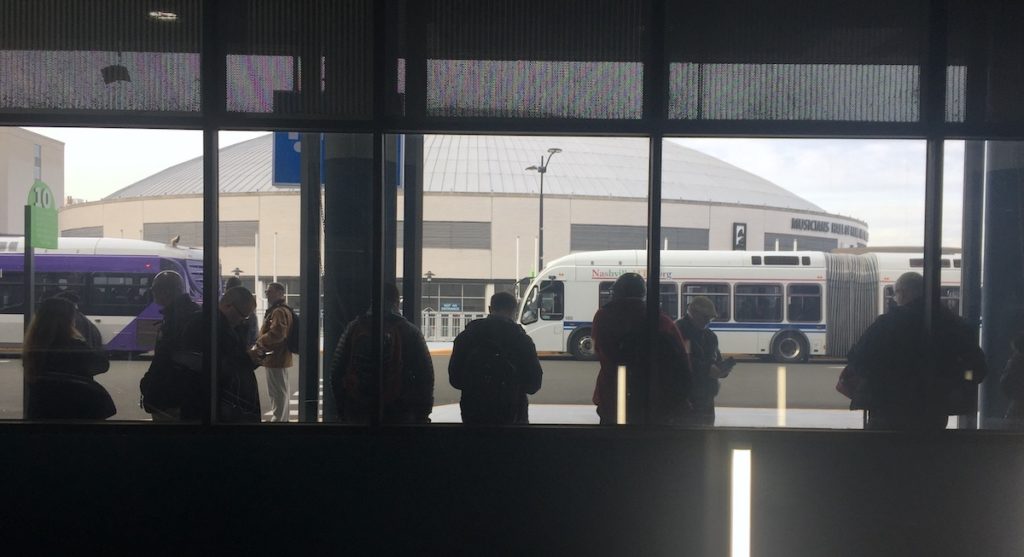
Ridership on Nashville’s bus system has fallen since the WeGo agency eliminated and modified some routes last year.
The dip was anticipated. But new numbers also show some people have shifted their habits to continue riding, and that some of the most popular routes are gaining riders and occasionally struggling with overcrowding.
Numbers requested by WPLN News show ridership dropped 6.9% after the reductions in late 2019, compared to the same timeframe the year before. About three-quarters of the decline is attributable to the elimination of WeGo’s free downtown circulator buses.
But there is evidence that other buses are picking up the slack downtown and in other areas that saw changes.
“Despite the fact that we have seen an overall dip in our ridership, our frequent service corridors have actually seen a ridership increase of 5.7%,” said WeGo spokeswoman Amanda Clelland.
 WeGo
WeGo This chart shows the eight busiest WeGo routes over a two-month period in 2018 and 2019. Ridership mostly increased after route changes in late 2019.
The main corridors were mostly spared from reductions, and WeGo has made sure to point riders toward those options.
Bus Riders React
Another change last year was WeGo’s simplification of some bus routes, which followed a lengthy study of ridership patterns.
WeGo is calling attention to what it sees as one successful change south of downtown, involving Route 8 along 8th Avenue and Route 17 along 12th Avenue.
These buses used to travel roughly parallel but would then turn and cross paths along Woodmont Boulevard before dropping people at the ends of the lines.
WeGo decided the crossover didn’t make sense and was pushing both lines through more traffic congestion.
 WeGo
WeGo This map shows how a mix of increases and decreases at East Nashville bus stops, a reflection of how habits shift when routes change.
“Just by straightening out the ends of the lines and making that service more simple and direct, we were able to see a ridership increase,” Clelland said, “because it’s easier to understand.”
Combined, those routes were up 6.3%.
Yet individual riders have had to make changes when the bus no longer goes where it used to.
Take Karen Peterson. She used to ride Route 17 and then switch to Route 10 to get home.
“Because it’s a more convenient walk to my house,” she said.
But when Route 10 went away, her walk became daunting — involving a steep hill and a section of road that is difficult to cross.
She ended up on the Route 8 — so not a loss for WeGo.
But, “it’s not a happy option.”
“With this, it’s busy busy busy busy,” Peterson said. “It can be very time consuming. It can be tricky to get to work on time.”
WeGo says both routes 8 and 17 are arriving on time more than before.
Several riders on Route 17 told WPLN News they’re happy with the service.
“It’s working for me,” said Anthony Winn. “The operators are very helpful, and I’m satisfied.”
A Culture Shift On Board
While the changes have meant somewhat fewer riders citywide, they’ve also contributed to some pockets of overcrowding.
Route 23 along Dickerson Road, for example, has seen a small uptick in ridership — but concentrated during the afternoon rush hour.
Clelland says there have been more reports of drivers leaving people at bus stops.
“Having full buses is great. Having buses that can’t accept more passengers … that’s not,” she said.
But WeGo leaders also believe there probably is more room on those buses. Nashville riders have just gotten used to spreading out, keeping bags on seats, and rarely having to stand.
WeGo would like to shift those habits and is planning a messaging campaign.

